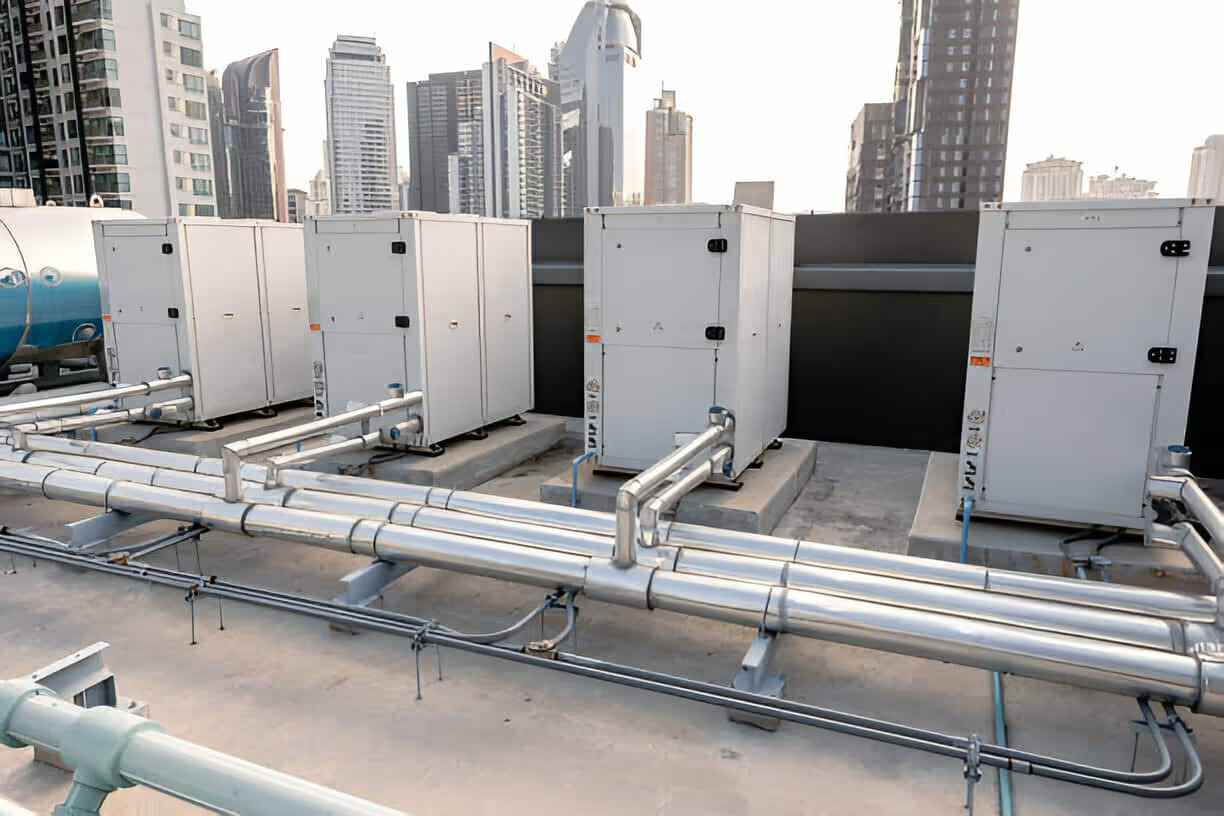Ventilation Services In Plant City, FL


Why ventilation matters in Plant City homes
Plant City’s hot, humid climate and seasonal pollen peaks create conditions where indoor humidity, mold growth, and airborne particles can become chronic problems. Tight, energy-efficient building envelopes further limit natural air exchange, trapping pollutants and stale air indoors. Well-designed mechanical ventilation:
- Removes excess moisture that contributes to mold and musty odors
- Lowers indoor concentrations of pollutants, VOCs, and allergens
- Reduces indoor CO2 during gatherings or in multi-occupant homes
- Complements HVAC systems to improve overall comfort and efficiency
Common ventilation issues we diagnose in Plant City
- Poor indoor humidity control and recurring musty smells after heavy rain or during summer
- Visible mold or condensation around windows and in closets
- Stale air, odors, or rooms that feel stuffy despite running AC
- High dust or pollen counts inside despite filtration
- Imbalanced house pressure causing backdrafting or difficulty exhausting bathrooms and kitchens
Ventilation service types — whole-home and targeted solutions
We evaluate and recommend systems based on the home’s layout, occupancy patterns, and humidity profile. Common options include:
- Energy Recovery Ventilators (ERV): Transfer both heat and moisture between outgoing and incoming air, making them well suited to Plant City’s humid climate where humidity control matters.
- Heat Recovery Ventilators (HRV): Transfer heat only; useful in drier climates or specific installations where moisture transfer is undesired.
- Exhaust-only systems: Targeted removal for bathrooms, kitchens, and attics to expel contaminants at the source.
- Supply/introducing systems: Bring in controlled amounts of outdoor air through filtration, often paired with distribution to high-use living spaces.
- Demand-controlled ventilation: Uses sensors (CO2, humidity) to adjust fresh air intake based on occupancy and indoor conditions.
How we size, integrate, and balance ventilation systems
A correctly sized, integrated system is essential for performance and energy efficiency:
- Assessment of ventilation needs: We start by evaluating home size, occupancy, existing duct layout, insulation and envelope tightness, and humidity trends.
- Calculating required airflow: Using industry standards and local considerations, we determine appropriate fresh-air rates per zone and whole-house ventilation volumes.
- Ductwork integration: Where possible, ERV/HRV units are connected to existing duct systems or supplied with dedicated distribution to ensure even airflow and minimize pressure imbalances.
- Balancing and airflow testing: After installation, systems are measured and adjusted so each room receives the intended amount of fresh air and exhaust. Proper balancing prevents negative pressure, backdraft, and uneven temperatures.
Energy recovery options and efficiency benefits
ERV and HRV systems recover thermal energy from exhaust air to pre-condition incoming air. In Plant City:
- ERV options reduce the latent load on air conditioners by transferring some moisture, helping indoor humidity control and lowering runtime.
- Energy recovery reduces annual HVAC energy use compared with uncontrolled ventilation, improving comfort with a modest energy tradeoff.
- Modern units include high-efficiency fans, variable speeds, and filters to limit pollen and particulates.
Code compliance and indoor air testing
Professional ventilation work includes attention to local building codes and minimum ventilation standards. Typical steps:
- Review and compliance: Designs follow local Florida code requirements and recognized ventilation guidelines for residential properties.
- Indoor air testing: Baseline and post-installation testing can measure relative humidity, particulate matter (PM2.5/PM10), VOCs, CO2, and mold spore counts to document improvements.
- Permits and inspections: For whole-home mechanical installations, permit coordination and final inspections ensure the installation meets safety and code expectations.
Maintenance plans and recommended upkeep
Mechanical ventilation systems are effective long-term when maintained. Typical maintenance tasks include:
- Filter changes: Replace or clean filters regularly (frequency depends on filter type and local pollen/dust levels).
- Heat-exchanger cleaning: ERV/HRV cores require periodic cleaning to maintain transfer efficiency—typically annually or per manufacturer guidance.
- Fan and damper checks: Inspect motors, belts, and dampers for wear and proper operation.
- Seasonal inspections: Check system settings before periods of high pollen or humidity to optimize performance and indoor air quality.
- A routine maintenance plan helps sustain performance, extend equipment life, and preserve energy savings.
Expected outcomes after professional ventilation work
When systems are properly sized, installed, and maintained, homeowners can expect:
- Noticeably fresher indoor air with fewer odors and less stagnation
- Reduced indoor humidity swings and less visible condensation or mold risk
- Lower indoor concentrations of pollen, dust, and common household pollutants
- Improved comfort with balanced airflow and fewer hot or sticky rooms
- Reduced burden on central cooling systems, which can improve efficiency and comfort consistency
Choosing between ERV and HRV for Plant City
- ERV: Generally recommended for humid climates like Plant City because it transfers moisture along with heat, helping to manage indoor humidity and reduce cooling loads.
- HRV: Consider in cases where moisture transfer is not desirable or where a specific design requirement prefers heat-only recovery.
- An assessment that considers home construction, occupant sensitivity to humidity, and the local climate will determine the best choice.
What to expect during assessment and installation
- Initial on-site evaluation documents current conditions, ventilation needs, and potential integration points with existing ductwork.
- A clear proposal outlines recommended equipment, estimated airflow rates, and the installation timeline without unnecessary upsells.
- Installations are staged to minimize disruption: small targeted projects are often completed in a day, whole-house ERV/HRV integrations may require a longer window and coordination for duct modifications, electrical hookup, and balancing.
- Post-install performance testing confirms the system meets specified airflow and indoor air quality targets.
Well-designed ventilation is an investment in long-term comfort, health, and energy performance—especially important in Plant City’s humid, pollen-prone environment. Proper assessment, code-aware installation, and a disciplined maintenance routine ensure the system delivers the fresher air and humidity control homeowners expect.
Service Areas


